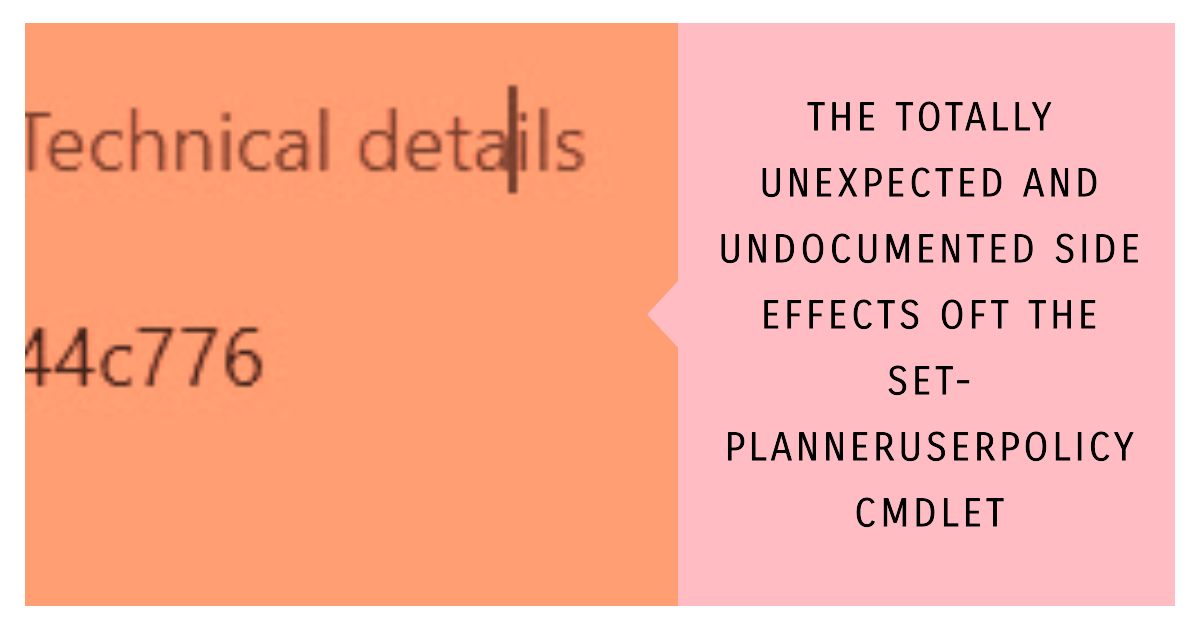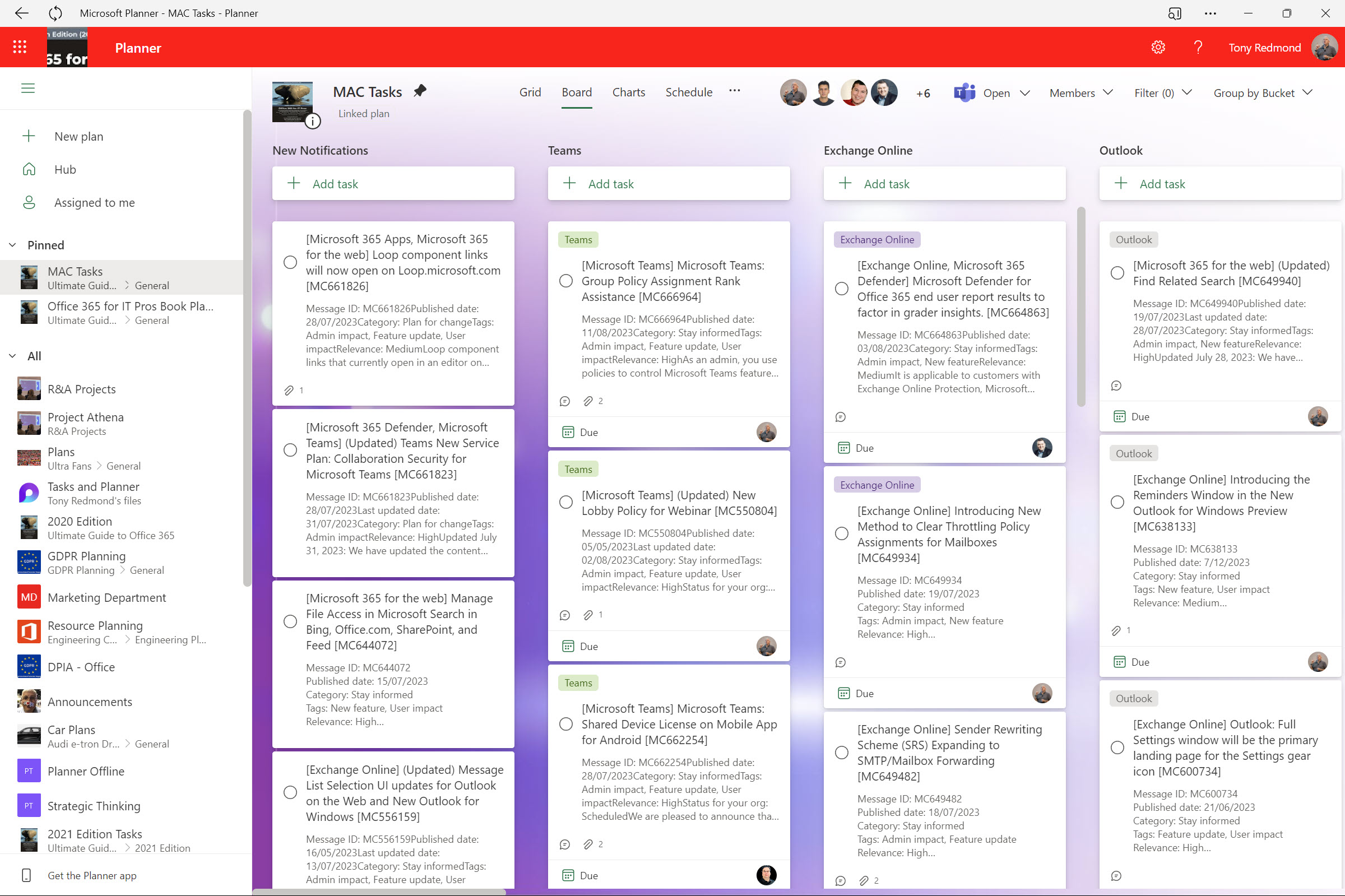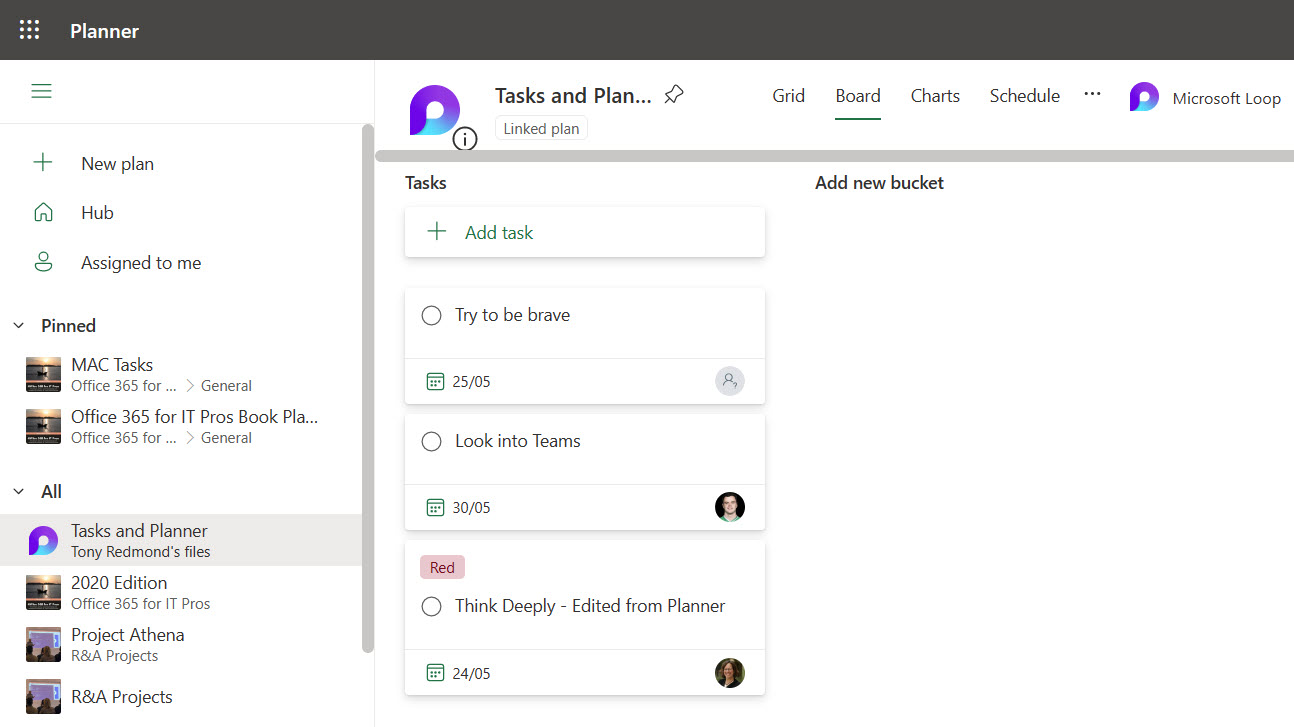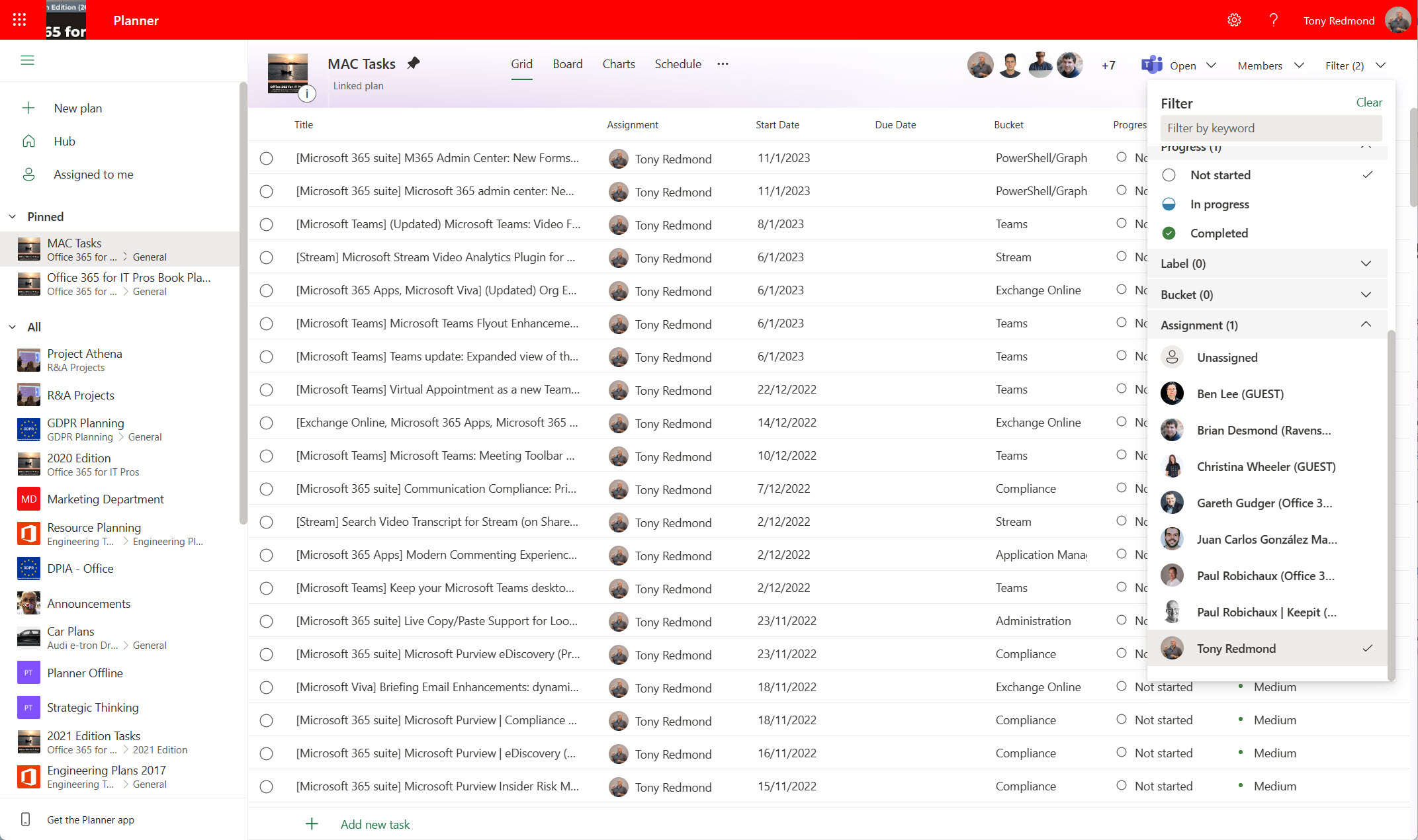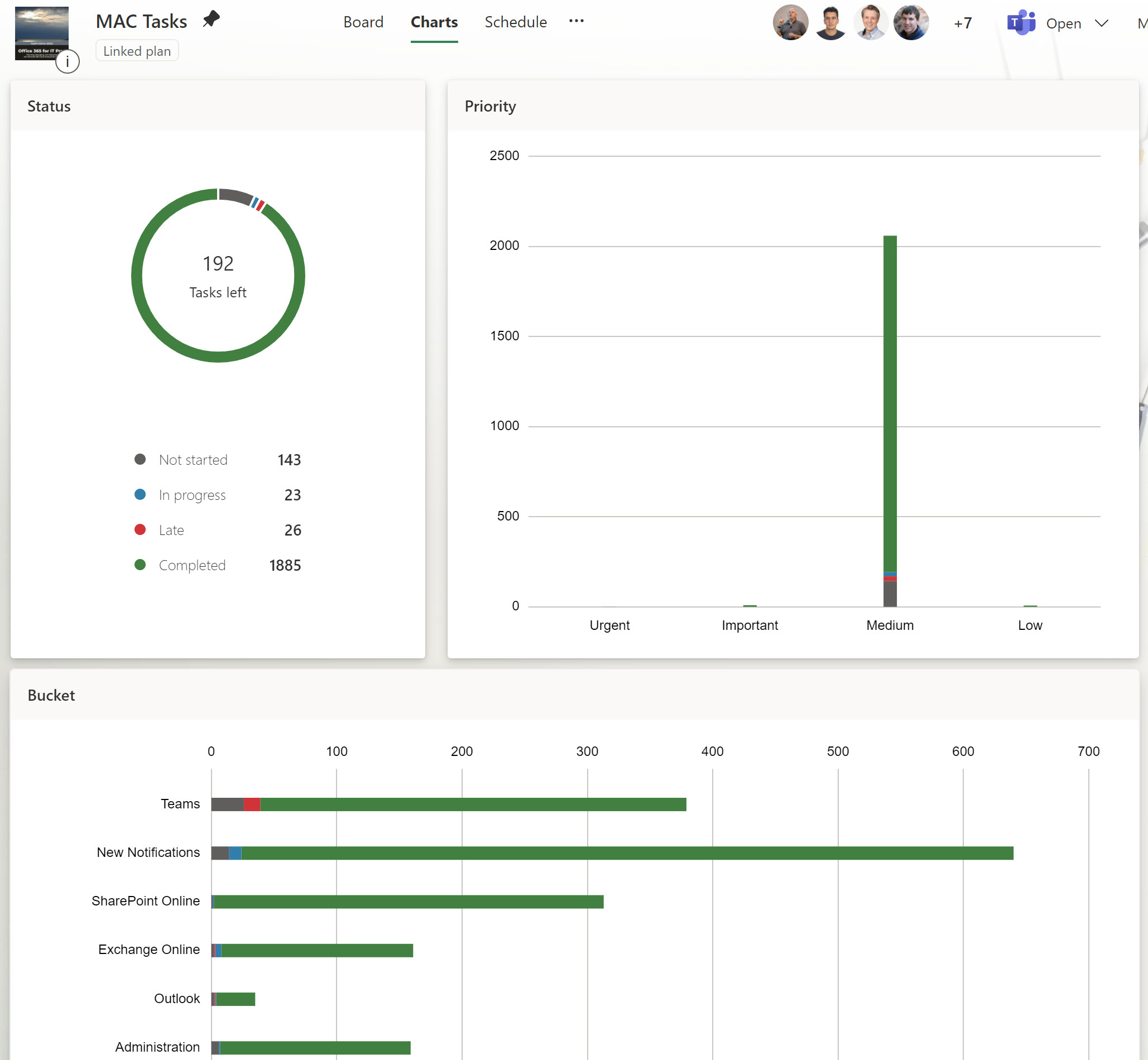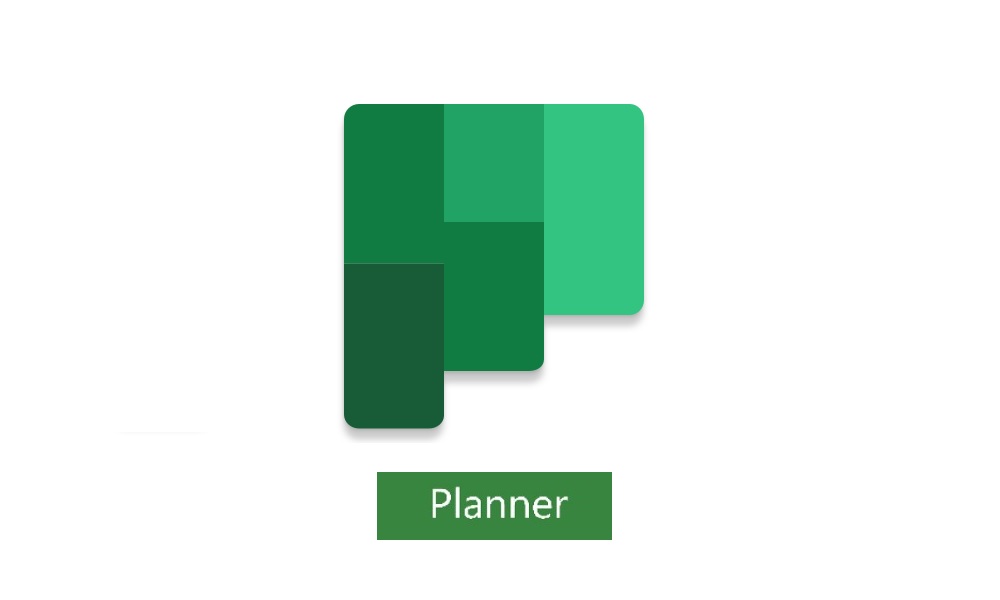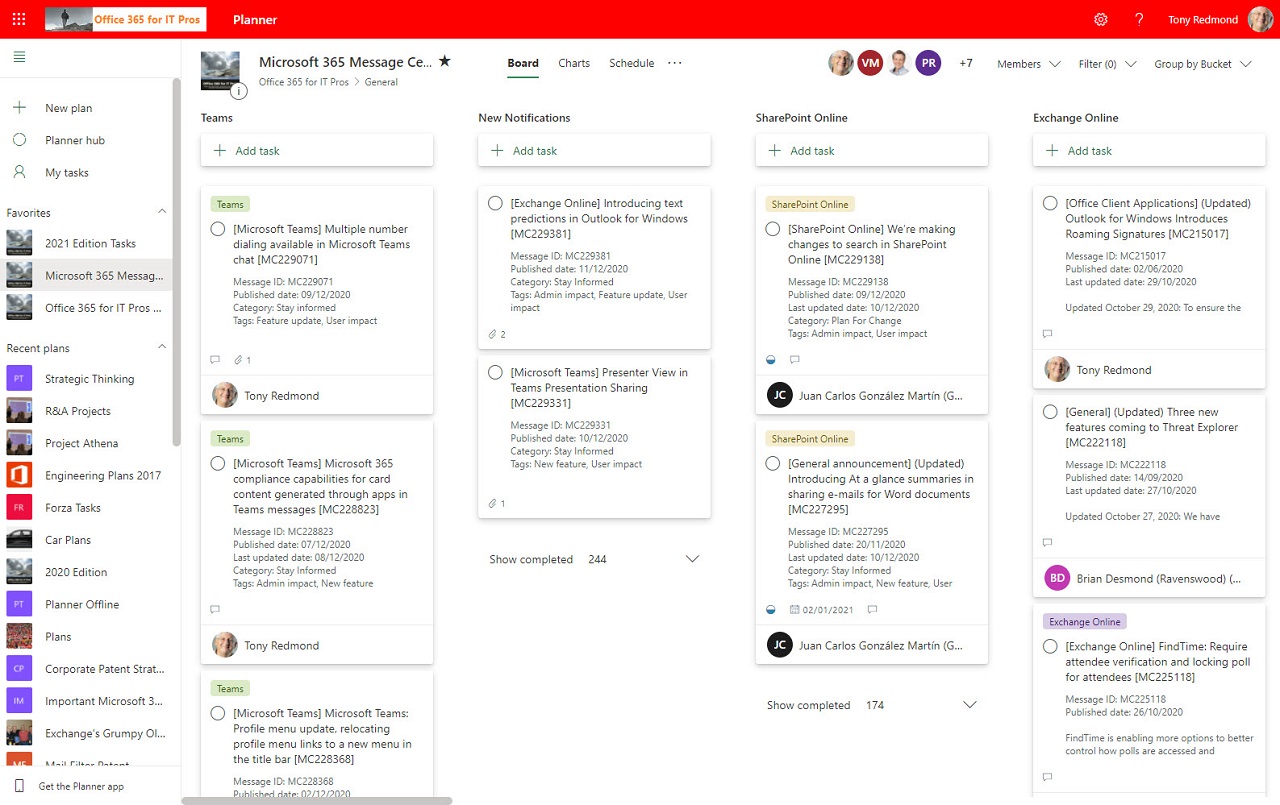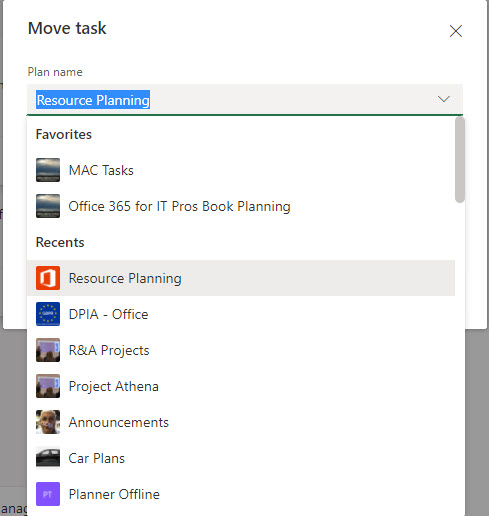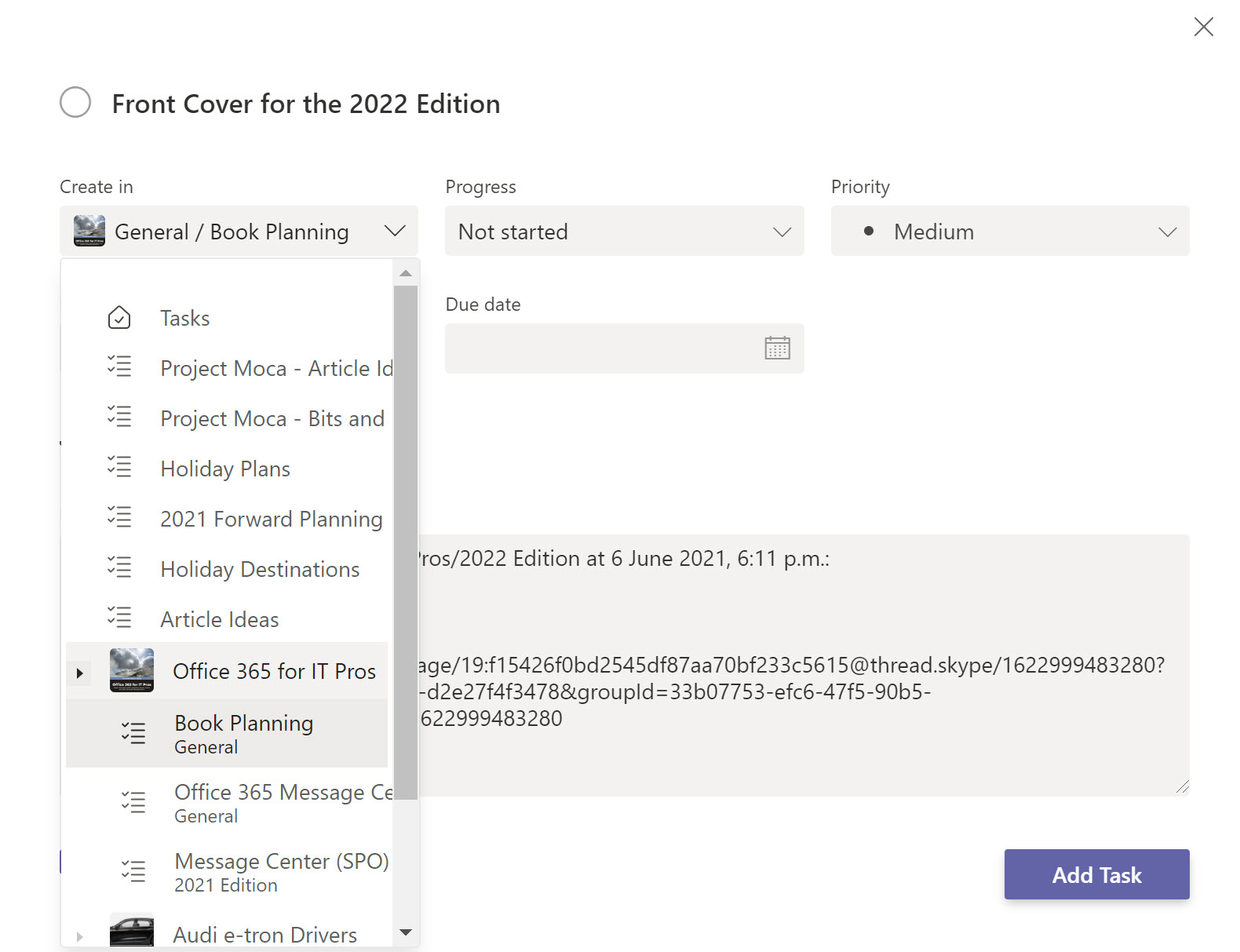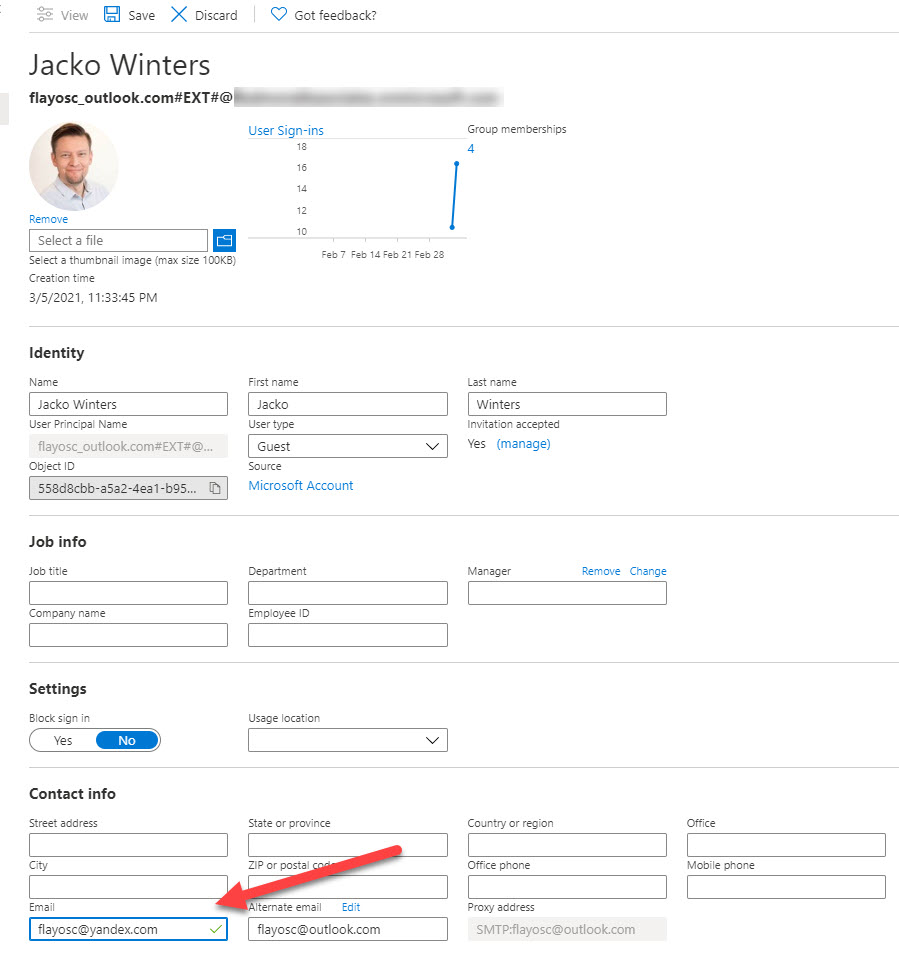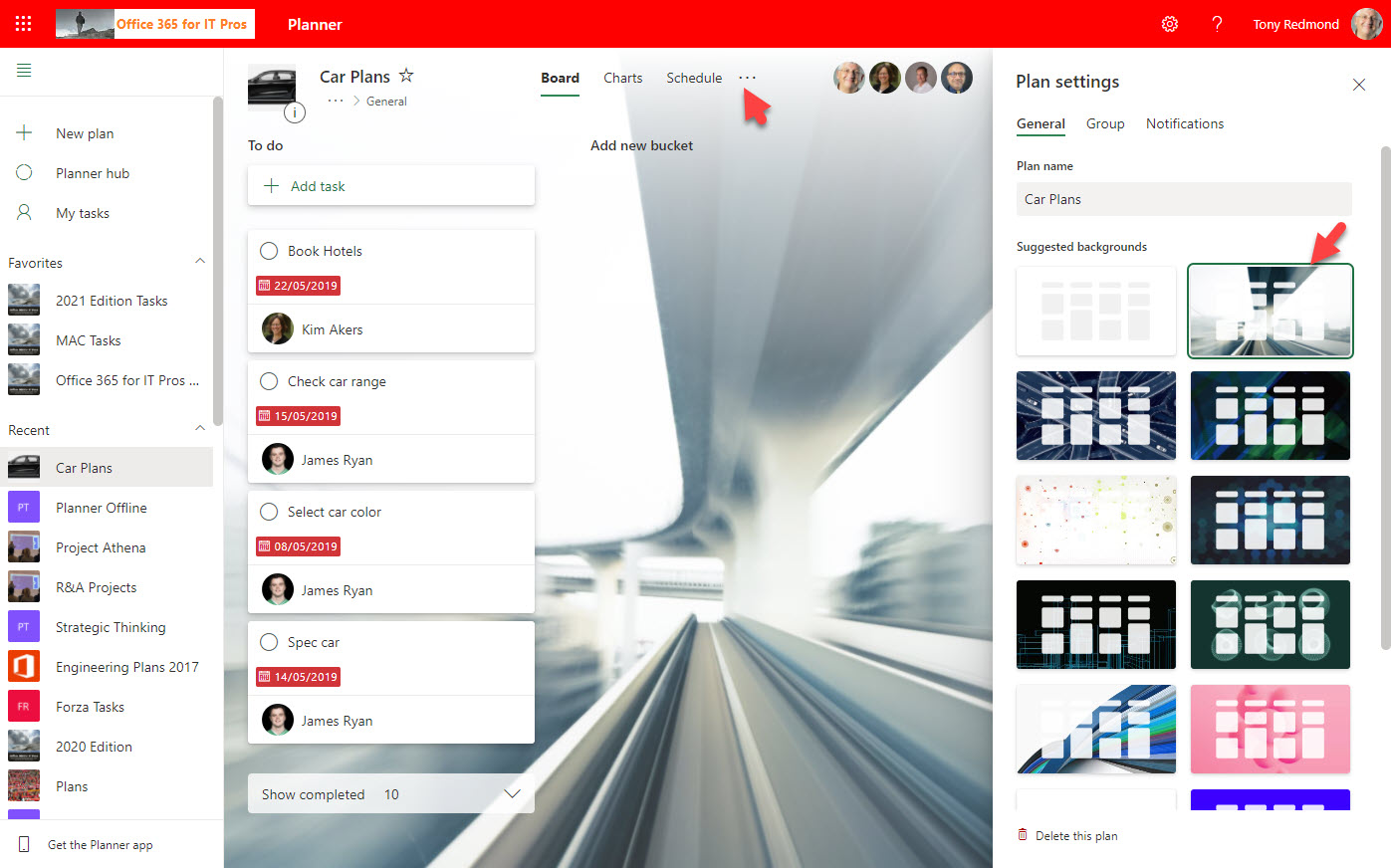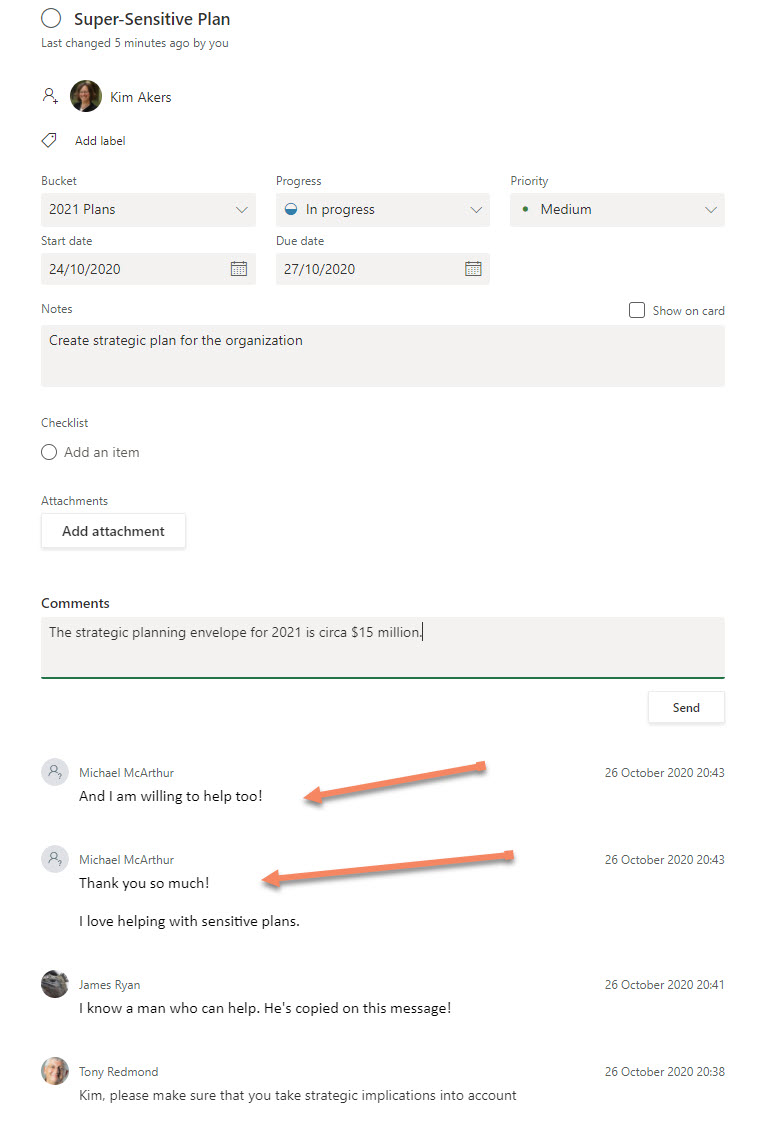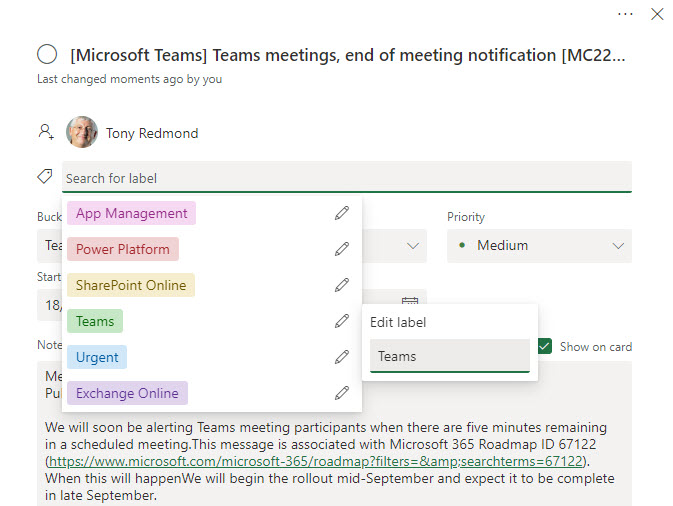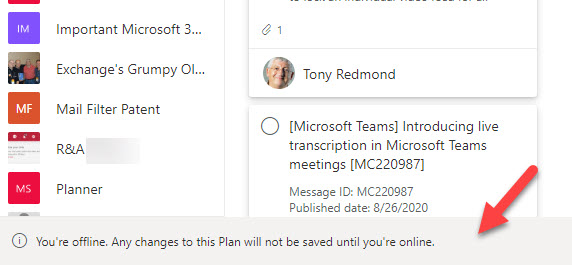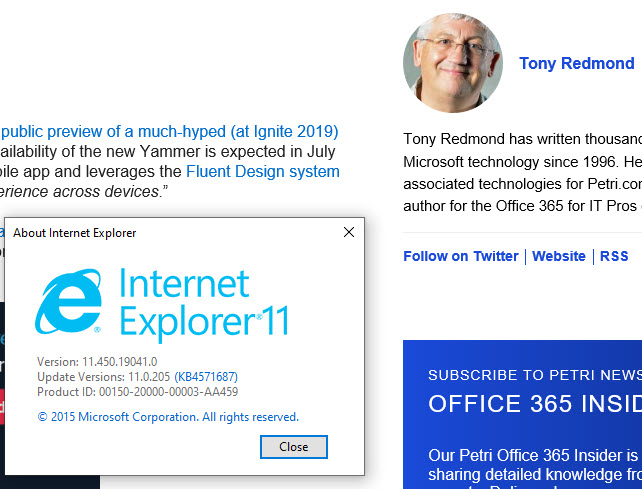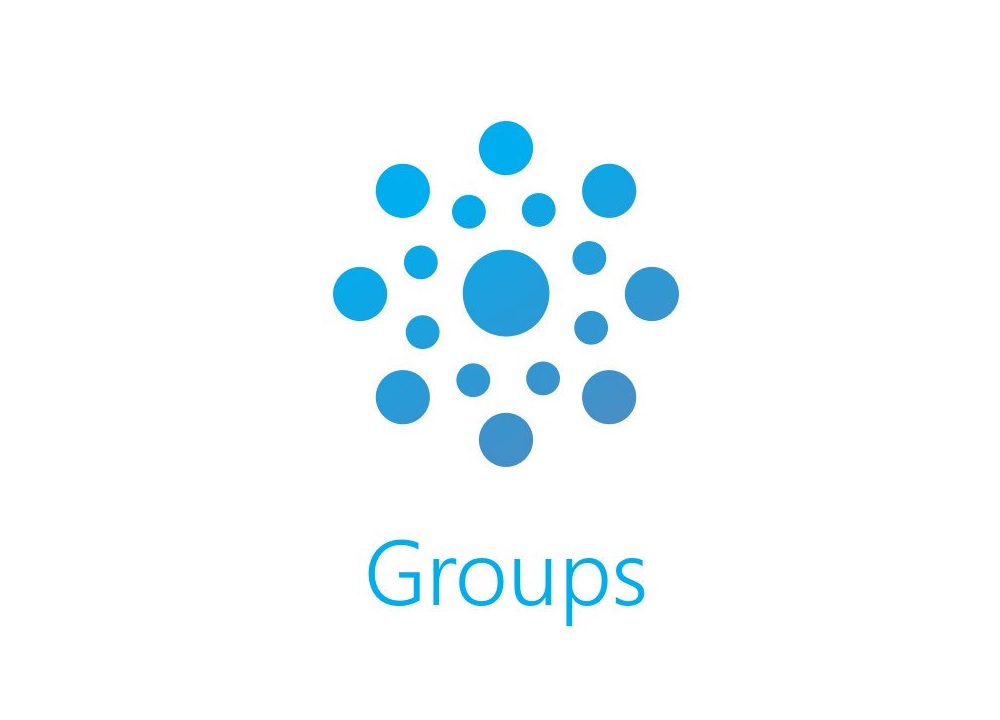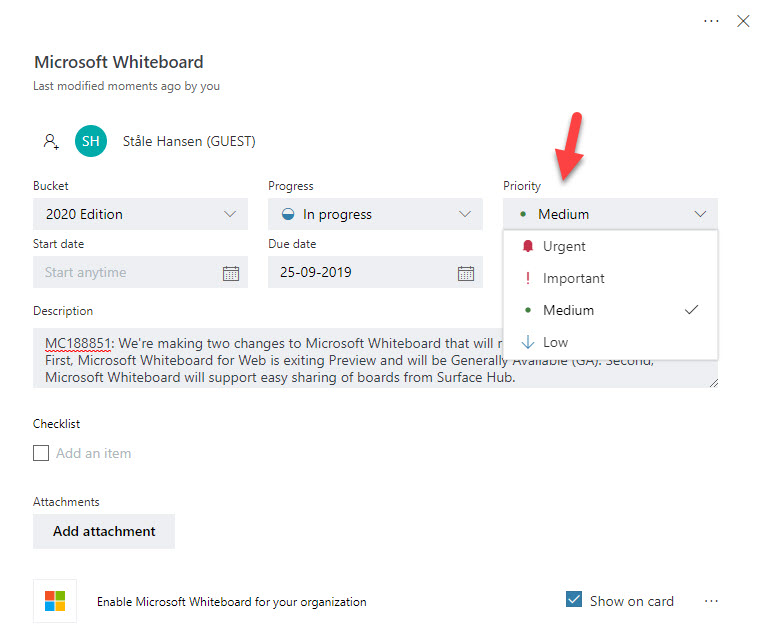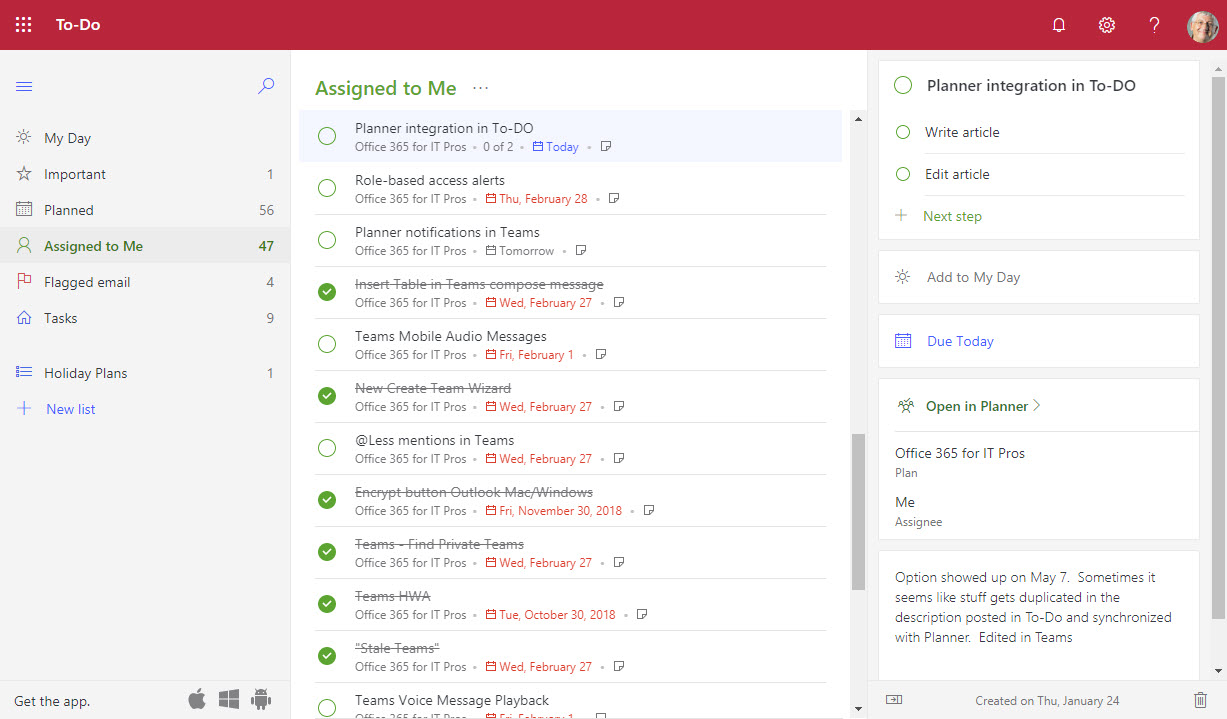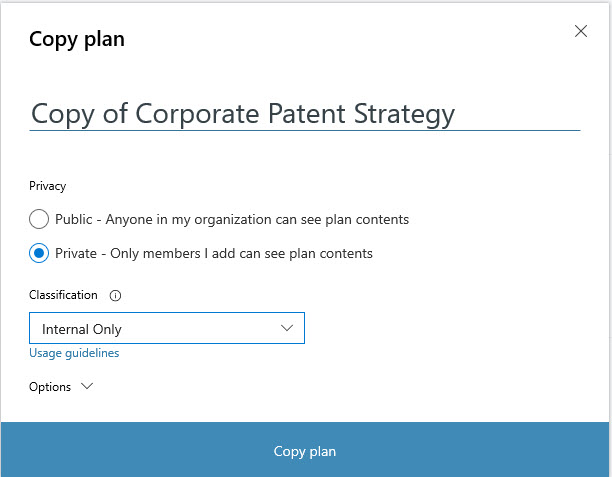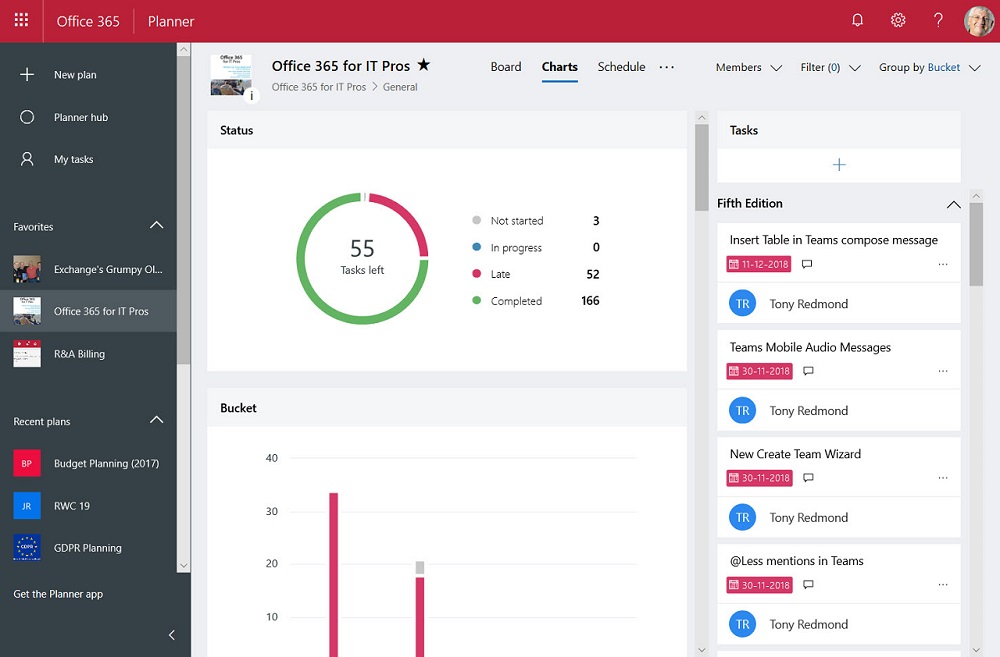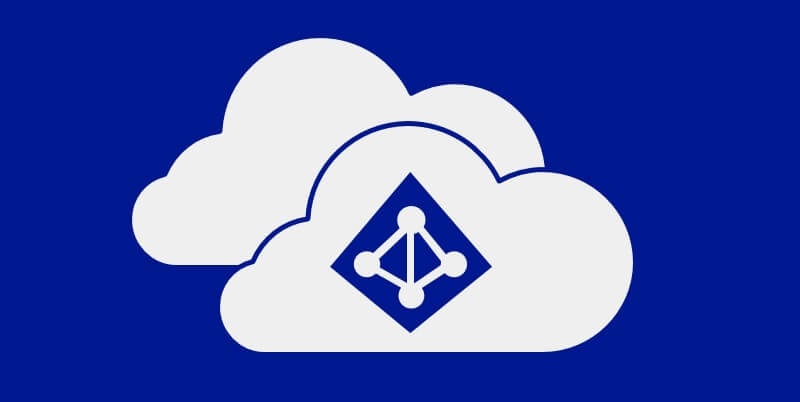The Set-PlannerUserPolicy cmdlet allows Microsoft 365 tenant administrators stop users deleting tasks created by other users. However, an undocumented consequence of setting the policy for user accounts is that it stops those accounts removing plans too. The unexpected block imposed by Set-PlannerUserPolicy caused me problems when attempting to delete a plan with PowerShell. It would be nice if the modules created by Microsoft worked as expected (and as documented).
Some wonder why Microsoft never developed a Planner desktop app. It’s probably due to a lack of engineering and support resources. But a good workaround exists because you can create a desktop app from the tasks.microsoft.com web site. For guest access to Planner in another tenant, a desktop shortcut might work. And there’s always the Tasks by Planner app in Teams. So maybe a Planner desktop app isn’t needed.
MC590113 (June 16) contains the unexpected news that capture of Planner audit events and To Do audit events will require tenants to have Purview Audit Premium licenses. Microsoft has bundled Planner and To Do with Project to make the change more appealing, but it’s really not. The sad fact is that little audit value is likely to be extracted from Planner and To Do events.
A May 10 post reveals how Loop task list components can synchronize with Planner (using a roster container) to make the Loop tasks available to other apps like To Do. It’s the first implementation of Planner roster (or lightweight) containers, meaning that the containers holding tasks are not associated with a Microsoft 365 group. Everything seems to work very smoothly and the technology is available now.
Planner grid view and recurring tasks are now available to Microsoft 365 tenants. Grid view is a much-requested feature while recurring tasks are also welcome, even if Microsoft forgot to tell people that the new capability was coming. Grid view is probably the biggest update Planner has received since 2020, but maybe an even bigger change is on the way with application permissions for the Planner Graph APIs. Time will tell.
Microsoft’s documentation for Planner limits raises more questions than it answers. Some of the documented limits are straightforward and easily understood. Others are just plain odd and bear no resemblance to what people see when they use the app. Microsoft’s writers have some work to do…
Administrators can set a block policy on users to stop them deleting Planner tasks that they didn’t create. The feature isn’t well known, but might be useful in situations where plan owners want tight control over task deletion. Unfortunately, the implementation isn’t well finished and client user experiences are not what you’d like.
Planner now creates digital twins (copies) of tasks in user mailboxes in Exchange Online to make data available for eDiscovery and compliance. Storing items in the Microsoft 365 substrate is the same approach to making data available for search and compliance as taken by Teams and Yammer.
The Planner development team likes to keep new features quiet, or so it seems. In September 2021, they released two new features, including being able to move tasks to plans belonging to other Microsoft 365 groups. While this doesn’t sound very exciting, it’s actually a useful feature. The only issue we’ve found is that some SharePoint attachments might need attention after moving tasks.
Microsoft is preparing to enable lightweight plans soon. The new plans are managed via the Planner app and should turn up in Teams meetings as a fluid component to allow meeting participants to capture tasks assigned during calls. It’s a neat way to use a plan that isn’t associated with a Microsoft 365 group. We’ll see what happens in September/October when the functionality lands. Also, a new cmdlet is available to export Planner data for a user. You never know where this might be useful.
A new feature allows Teams users to create tasks from personal chats and channel conversations. Tasks from chats are personal while those created from channel conversations can be personal or go into a Planner plan. Although you might like the tasks to be populated more fully, the overall implementation is a nice addition to the Microsoft 365 tasks system.
A new preview feature allows the resources available to an Azure AD guest account to be reassigned to another email address. It’s a nice feature, but Teams has some problems with it at present. On the upside, everything works great with SharePoint Online and Planner, and we’re sure that Microsoft will fix the problem with Teams soon.
Microsoft will soon introduce roster containers to Planner. These are plans without Microsoft 365 Groups that apparently are tied to some mysterious new functionality. Because we have no idea what this functionality will be, we decided to disable it using Planner’s odd approach to PowerShell. Suffice to say that it’s not straightforward. Now if only someone had a plan…
The ability to assign “smart backgrounds” generated by Designer to a Planner plan is now rolling out to Office 365 tenants. The smart part of the background is that the plan name is used to generate the image. Any plan member can change the background, which should lead to some entertaining conflicts when people differ over the choice of background.
An unfortunate problem in the Office 365 Planner app allows external recipients to be added to to email so that they receive and see comments posted for tasks. Although this doesn’t sound like such a big problem, it is because it can lead to confidential information leaking outside the organization in an uncontrollable manner. Microsoft support says that Planner is working by design. We don’t believe that this could possibly be the case.
Microsoft has updated task labels in the Office 365 Planner app to make the labels more accessible and obvious (and therefore more useful). Changes due to arrive soon include an increase in the number of labels from six to 25, more intelligent attachments, and an upgrade to the Teams integration to allow tasks be created from chats and conversations.
Microsoft Planner is able to work in offline mode when disconnected from the network. In this article, we describe what the browser client can and cannot do when it’s not connected. The thing is that Microsoft hasn’t told anyone that Planner can work offline. No blog, no documentation, and no Office 365 notification. Isn’t that strange?
Office 365 Tenants need to stop people using Internet Explorer. On November 30, Teams stops support for IE11; nine months later, the rest of the Microsoft 365 apps cease support. According to Microsoft, the only browser in town is the new Edge (which has an IE mode), but most will keep on using Chrome, Firefox, Brave, or Safari as they do today.
The Planner browser UI now displays a notice to users when someone else has changed tasks in a plan. This is useful, but it would be much better if Microsoft enabled support for the Office 365 audit log so that events happening in Planner flowed into the audit log. There’s no sign of that happening, despite requests for three years or more.
The Planner iOS app now supports the ability to share items like tweets, Facebook posts, and web links and create them as new tasks in plans. It’s a very useful feature announced in the Planner blog, but never highlighted to Office 365 tenants in a Message Center notification.
At the Ignite 2019 conference in Orlando, Microsoft announced that Office 365 Groups will soon support sensitivity labels, but only to mark group containers with levels of sensitivity. The actual content of the containers, like the messages in Outlook Groups or Teams, will remain unaffected by the labels. For now.
Planner, the task management app built into Office 365, has been upgraded to support a priority field for tasks. By itself, that’s not very exciting, but the new Group by Priority view is pretty good and makes it easy to move tasks within priorities in a plan. It just goes to prove that how a new feature is implemented is equally important to the existence of the new feature.
If you’ve integrated Planner into Teams by creating channel tabs for plans, users are now notified when they are assigned new tasks.The notifications turn up in the Teams activity feed. Why? Well, the Planner bot sends messages to people about new tasks, so its chats as treated like new messages in a personal chat.
From version 1.56 on, you can synchronize your My Tasks list from Planner to To-Do. The integration works well and it’s easy to manage Planner tasks in To-Do. Some of the more advanced actions aren’t available in To-Do, but a quick link to Planner solves the problem. Planner tasks are also accessible in the To-Do mobile app.
Microsoft has announced that Planner now boasts the ability to copy a plan. Apparently, the idea is to save time by setting up plan templates that you can reuse. Office 365’s task management app might not get as much love as other apps, but this is a useful set forward. Only users who are allowed to create new Office 365 groups can copy plans.
The Office 365 Planner app is now available for U.S. Government Cloud tenants. Only it’s not the full Planner because some bits still have to be tested to make sure that they meet government standards.
Backup vendors say you should definitely use their products to protect your valuable Microsoft 365 data. Backup products can do a good job, but the nature of Microsoft 365 creates many challenges at a technical level. A lack of APIs is the most fundamental issue, but the connected nature of Microsoft 365 apps is another.
Microsoft has launched the preview of Google B2B Federation, which allows Google accounts to be used to access Azure AD apps. Quite how this will work out for apps that use guest user accounts is unknown at this point.
